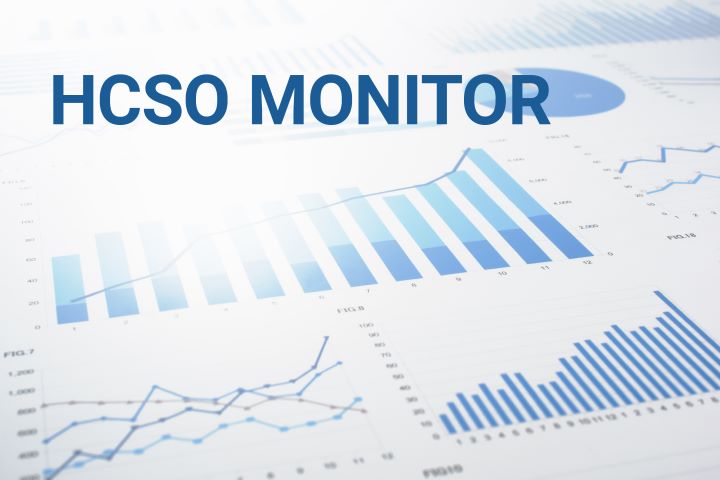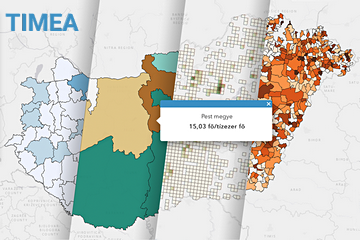Investment
Investment is defined in economics as creating or purchasing means of production, by which an economic actor obtains its goods supporting production and operation. Considered for a given period it means the expansion or modernisation of its capital, namely its stock of production means. Statistics on investments refer to the value of new and used investments, and are broken down by material-technical composition, by section and region.
Key figures
Investments, change in volume
Indicator description
Change of volume in the performance value of new investments realised by the economic operators compared to the same period of the previous year.
Source of data:
Summary Tables (STADAT)
Last data for period: Q4 2024
Investment in machinery, change in volume
Indicator description
Change of volume in the performance value of new machinery, equipment and vehicle investments realised by the economic operators compared to the same period of the previous year.
Source of data:
Summary Tables (STADAT)
Last data for period: Q4 2024
Investments in construction, change in volume
Indicator description
Change of volume in the performance value of new investments in construction realised by the economic operators compared to the same period of the previous year.
Source of data:
Summary Tables (STADAT)
Last data for period: Q4 2024
Investments of enterprises, change in volume
Indicator description
Change of volume in the value of new investments at enterprises with 50 or more employees compared to the same period of the previous year.
Source of data:
Summary Tables (STADAT)
Last data for period: Q4 2024
Featured
HCSO Monitor
The collection of interactive figures provides up-to-date information on the latest domestic and international socio-economic trends. The decisive part of the figures included in HCSO Monitor are downloadable in both image and data formats (PNG, SVG and CSV). Feel free to browse the data in HCSO Monitor, updated many times a week!
Investment performance lessened by 13.8% in the 4th quarter of 2024, Investment, 4th quarter of 2024
The volume of investments was 13.8% lower according to raw data in the 4th quarter of 2024 compared to the same period of the previous year. Compared with the previous quarter, based on seasonally adjusted data, the value of investments lessened by 2.2% at comparative prices. The performance of investments was 13.8% lower in 2024 than a year earlier.
Hungary 1st-3rd quarters of 2024 – Increasing consumption
The performance of the Hungarian economy surpassed in the 1st – 3rd quarters of 2024 the one year earlier level by 0.6%. Household consumption increased, supported by real earnings growth, while inflation stabilised, being 3.7% in the 1st – 3rd quarters. The performance of most service offering sections and that of construction grew year-on-year, while that of the industry and agriculture lagged behind the one year earlier level. Labour market-wise both employment and unemployment rate slightly grew.
Statistical Yearbook of Hungary, 2023
The yearbook provides an overview of Hungary's demographic, social and economic processes, environmental characteristics and their changes over time, with the help of tens of thousands of data of 500 tables, graphs and maps. Innovatively, the Tourism, catering chapter in the volume includes the gross receipts of tourist accommodation establishments by type of accommodation. Another change is that this year the Regional data chapter already presents territorial data by tourism area, giving greater emphasis to tourist destinations.
Hungary, 2023
Geopolitical tensions continued to overshadow economic developments in 2023, with the gross domestic product falling by 0.9%. Inflationary pressures gradually eased, but the 17.6% annual increase in consumer prices led to a decline in real earnings and consumption, and negatively affected investment decisions. Despite the economic difficulties, employment has reached a record high. In 2023, the number of deaths and births continued to fall, in addition to the decrease in the number of women of childbearing age.
Statistical Pocketbook of Hungary, 2023
The tables and graphs in the latest edition of the Statistical Pocketbook of Hungary provide a comprehensive insight into the evolution of social and economic trends in Hungary in 2023. Its international chapter allows for comparisons of major data primarily on member states of the European Union. The publication amasses, starting this year, commercial, private and other accommodation establishments in one unit.
Snapshots, 2023 – Agriculture
Hungary’s agriculture contributed to the gross value added of the national economy to a higher extent than the EU average (1.9%), by 5.4% according to preliminary data in 2023. The volume of the total output of agriculture grew by 25% (after the previous year, which was a year of drought). A total of 14.9 million tonnes of cereals, 65% more than in 2022, was harvested on 2.4 million hectares. The producer price of cereals decreased by 39%.
Related themes
Methodological information
First releases |
Latest release | Next release |
|---|---|---|
| Investment, 4th quarter 2024 | 24/02/2025 | 22/05/2025 |
Publications |
Released |
|---|---|
| Hungary 1st-3rd quarters of 2024 | 09/01/2025 |
| Regional Statistical Yearbook of Hungary, 2023 | 27/11/2024 |
| Hungary, 1st semester of 2024 | 14/10/2024 |
| Statistical Yearbook of Hungary, 2023 | 29/08/2024 |
| Hungary, 2024 Q1 | 26/08/2024 |
| Hungary, 2023 | 27/06/2024 |
| Statistical Pocketbook of Hungary, 2023 | 27/05/2024 |
| Hungary, quarters 1-3 of 2023 – On the path of disinflation | 10/01/2024 |
| Regional Statistical Yearbook of Hungary, 2022 | 17/01/2024 |
| Hungary, 1st semester of 2023 – disinflation started | 19/10/2023 |
| Statistical Yearbook of Hungary, 2022 | 23/11/2023 |
| Hungary, 2023 Q1 | 30/08/2023 |
| Statistical Pocketbook of Hungary, 2022 | 14/06/2023 |
| Hungary, 2022 | 28/06/2023 |
| Hungary in figures, 2022 | 11/07/2023 |
| Hungary, Quarter 3 2022 | 06/02/2023 |
| Regional Statistical Yearbook of Hungary, 2021 | 10/01/2023 |
Release and revision calendarPublication repertory







